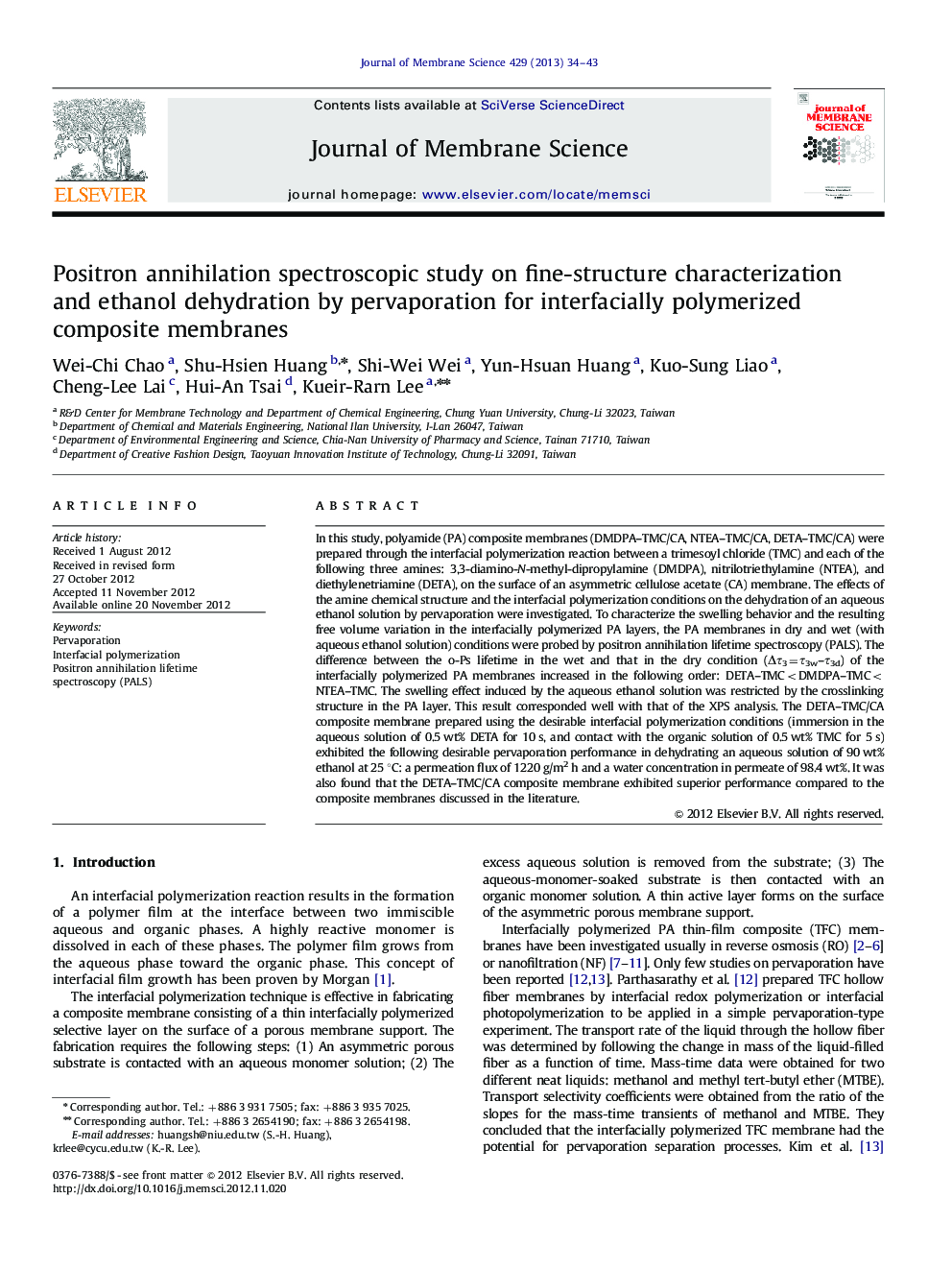| Article ID | Journal | Published Year | Pages | File Type |
|---|---|---|---|---|
| 634540 | Journal of Membrane Science | 2013 | 10 Pages |
In this study, polyamide (PA) composite membranes (DMDPA–TMC/CA, NTEA–TMC/CA, DETA–TMC/CA) were prepared through the interfacial polymerization reaction between a trimesoyl chloride (TMC) and each of the following three amines: 3,3-diamino-N-methyl-dipropylamine (DMDPA), nitrilotriethylamine (NTEA), and diethylenetriamine (DETA), on the surface of an asymmetric cellulose acetate (CA) membrane. The effects of the amine chemical structure and the interfacial polymerization conditions on the dehydration of an aqueous ethanol solution by pervaporation were investigated. To characterize the swelling behavior and the resulting free volume variation in the interfacially polymerized PA layers, the PA membranes in dry and wet (with aqueous ethanol solution) conditions were probed by positron annihilation lifetime spectroscopy (PALS). The difference between the o-Ps lifetime in the wet and that in the dry condition (Δτ3=τ3w–τ3d) of the interfacially polymerized PA membranes increased in the following order: DETA–TMC ► We prepared PA/CA pervaporative composite membranes by interfacial polymerization. ► PA layers' swelling behavior and free volume variation were measured by PALS. ► Results of PALS experiments corresponded well with pervaporation performance.
